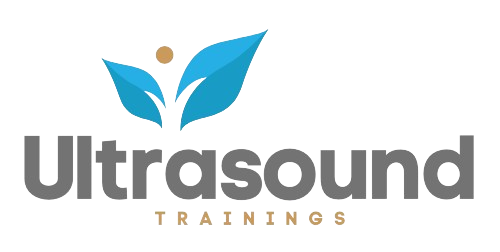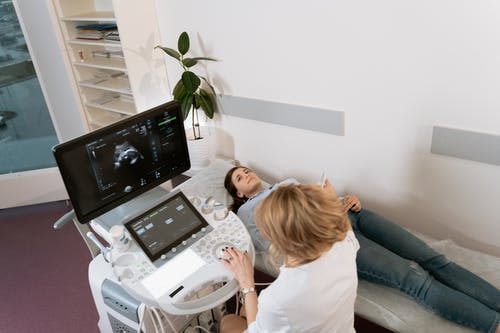Ultrasound training is an exciting and essential step for healthcare professionals who want to enhance their skills and expand their capabilities. Whether you’re a midwife, nurse practitioner, physician assistant, or doctor, mastering ultrasound is a valuable tool that can improve patient care, diagnostics, and treatment outcomes. However, like any technical skill, ultrasound training comes with its challenges. Many students make common mistakes that can hinder their progress or create unnecessary obstacles in their learning journey.
In this blog post, we’ll explore some of the most frequent mistakes that ultrasound students make during their training and provide helpful tips on how to avoid them to ensure a smooth and successful educational experience.
1. Not Practicing Enough
Ultrasound is a hands-on skill that requires a great deal of practice. It’s easy for students to think that understanding the theory behind ultrasound is enough to pass their exams or use the technology effectively in real-life situations. However, this is one of the biggest mistakes you can make.
Common Mistake:
- Underestimating the Importance of Practice: Ultrasound involves interpreting real-time images of the body, and the more you practice, the more comfortable you become with both operating the ultrasound machine and interpreting the images.
Tip for Success:
- Practice Regularly: Aim to practice as much as possible, both during your training sessions and outside of class. Seek out opportunities for hands-on practice with experienced instructors, mentors, or fellow students. The more time you spend in the clinical setting, the more proficient you’ll become.
- Simulations and Mock Exams: If possible, engage in ultrasound simulations and mock exams to replicate real-life scenarios and familiarize yourself with the equipment and procedures.
2. Neglecting Proper Image Acquisition Techniques
Getting a clear, accurate image is the key to a successful ultrasound exam. One of the most common mistakes students make is failing to properly position the ultrasound probe or misapplying pressure, which leads to blurry or incomplete images.
Common Mistake:
- Incorrect Probe Positioning: Not knowing how to angle the probe correctly, apply the right amount of pressure, or move it smoothly across the body can lead to poor image quality and missed diagnostic information.
Tip for Success:
- Learn the Correct Techniques: Pay close attention to your instructor’s demonstrations on how to position the probe, as this is critical to obtaining the best possible images. Proper positioning is essential for effective diagnostics.
- Master Different Angles and Views: Ultrasound requires different imaging techniques based on the area you are scanning. For example, imaging the abdomen, pelvis, or heart all require different approaches and angles. Be sure to practice these variations and seek feedback from your instructors.
3. Focusing Too Much on the Machine and Not Enough on the Patient
While it’s important to understand how to operate the ultrasound machine, it’s just as important to remember that the machine is a tool to help you assess your patient’s condition. Some students become overly focused on the technology and forget to interact with and assess the patient properly.
Common Mistake:
- Over-reliance on the Machine: Not paying enough attention to the patient’s comfort, positioning, or history can lead to missed information that is vital for a proper diagnosis.
Tip for Success:
- Maintain a Patient-Centered Approach: Always ensure that you’re aware of the patient’s position, comfort, and any potential issues they may be experiencing. Ask questions about their symptoms and history to better understand what you should be looking for on the scan.
- Communicate Clearly with Patients: Take the time to explain the procedure to your patients, making them feel comfortable and informed. Good communication is essential for building trust and ensuring the best possible outcome from the ultrasound examination.
4. Ignoring Anatomy and Physiology
Ultrasound technology is not only about learning how to use the machine; it’s also about understanding the anatomy and physiology you’re imaging. Many students mistakenly focus only on the technical aspects of the ultrasound without taking the time to thoroughly study the human body’s structures.
Common Mistake:
- Not Mastering Anatomy: Ultrasound exams are heavily reliant on understanding the human anatomy. Without a strong knowledge of the organs, muscles, and blood vessels being imaged, it can be difficult to properly interpret the images you obtain.
Tip for Success:
- Study Anatomy Regularly: Take time to thoroughly study and review the anatomy relevant to the areas you will be scanning. Understand the size, shape, and function of the organs and structures you’re imaging, as this will help you interpret the ultrasound images more effectively.
- Relate Images to Anatomy: As you view ultrasound images, constantly connect what you see on the screen to what you know about anatomy. This will help you build confidence in recognizing normal versus abnormal findings.
5. Rushing Through the Exam Process
It’s common for students to feel pressured to finish exams quickly, especially during timed mock tests or real clinical settings. However, rushing through the ultrasound exam can result in inaccurate results, missed observations, and increased patient discomfort.
Common Mistake:
- Speed Over Accuracy: Trying to rush through an ultrasound exam can lead to incomplete imaging, skipping important areas, or not fully understanding the quality of the images produced.
Tip for Success:
- Focus on Accuracy, Not Speed: While time management is important, prioritize taking high-quality images and conducting thorough exams over rushing to complete the procedure quickly. As you gain experience, your speed will improve naturally without sacrificing accuracy.
- Take Your Time During Training: During training, take the time to carefully analyze each image and ask for feedback. Building a habit of accuracy during your training will lead to better results when you’re in real-world situations.
6. Failing to Seek Feedback
It’s easy to assume that you know what you’re doing when you’ve learned the basics, but ultrasound is a highly specialized skill that can always be improved. Not seeking feedback or refusing to ask questions can impede progress and limit your learning.
Common Mistake:
- Not Asking for Help: Many students fail to seek feedback or clarification when they encounter challenges, which can lead to repeating mistakes and preventing growth.
Tip for Success:
- Ask for Feedback Regularly: Whether you’re working with a mentor, instructor, or fellow student, actively seek constructive feedback. Don’t hesitate to ask questions about techniques, image quality, or your interpretation of the results.
- Collaborate with Others: Collaborate with fellow students or experienced professionals to get different perspectives. Practicing together and discussing cases can provide valuable insights and enhance your learning experience.
7. Becoming Overwhelmed by the Complexity of the Subject
Ultrasound training involves mastering a combination of technical, anatomical, and interpretive skills, which can feel overwhelming at times. Some students may struggle with balancing these various aspects and feel discouraged if they don’t grasp everything immediately.
Common Mistake:
- Feeling Overwhelmed: It’s normal to feel overwhelmed by the complexity of ultrasound training, but it’s important not to let this deter you.
Tip for Success:
- Take It One Step at a Time: Break down the learning process into manageable steps. Focus on mastering one technique or concept at a time before moving on to the next.
- Stay Patient and Persistent: Ultrasound is a skill that improves over time with practice and persistence. Keep practicing and reviewing, and don’t be discouraged by mistakes. Every error is an opportunity to improve!
Conclusion: Set Yourself Up for Success in Ultrasound Training
Ultrasound training is an exciting journey that offers immense value to healthcare professionals. By avoiding these common mistakes and applying the tips provided, you can ensure that your ultrasound training is successful and set yourself up for a rewarding career in diagnostic imaging.
Remember, ultrasound is a hands-on skill that takes time and practice to master. Focus on honing your technique, improving your knowledge of anatomy, and seeking feedback from experienced professionals. With dedication and perseverance, you’ll be well on your way to becoming a skilled ultrasound technician capable of providing top-quality care to your patients.
At Ultrasound Trainings, we offer comprehensive ultrasound training programs tailored to healthcare professionals, including midwives, nurse practitioners, physicians assistants, and doctors. Our courses are designed to give you the knowledge and hands-on experience you need to succeed in the world of ultrasound diagnostics. Contact us today to learn more about how we can help you advance your career!


